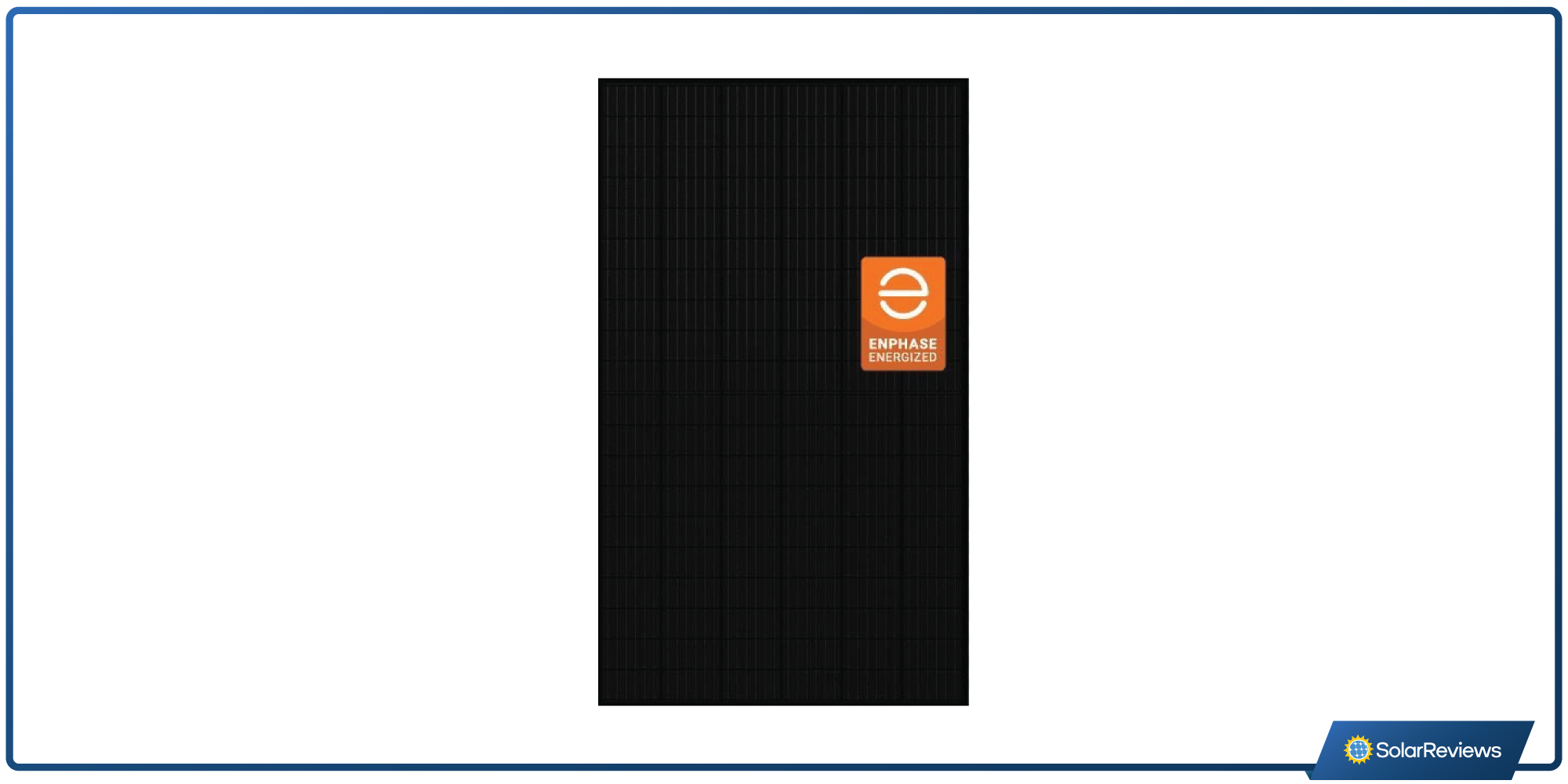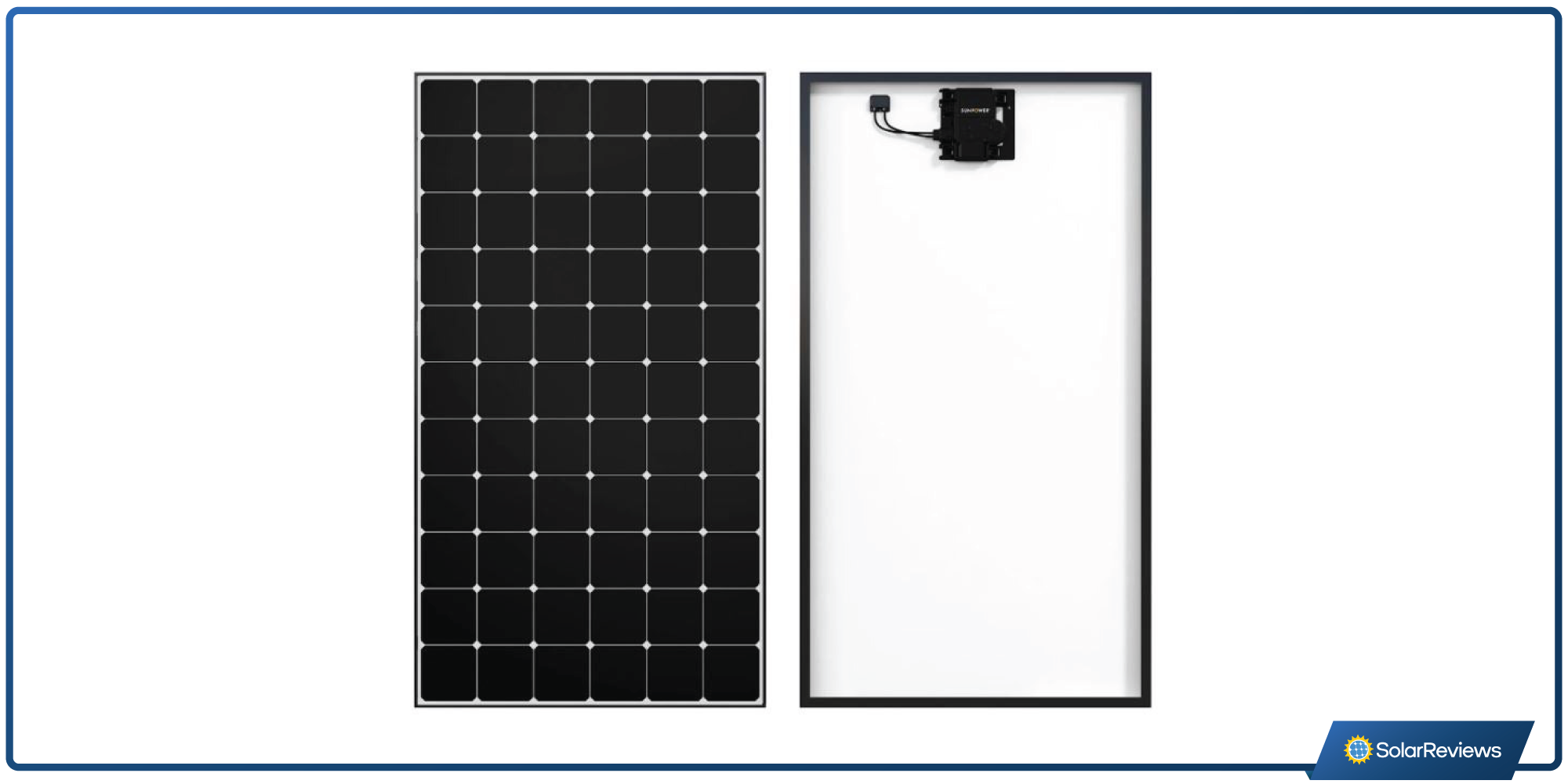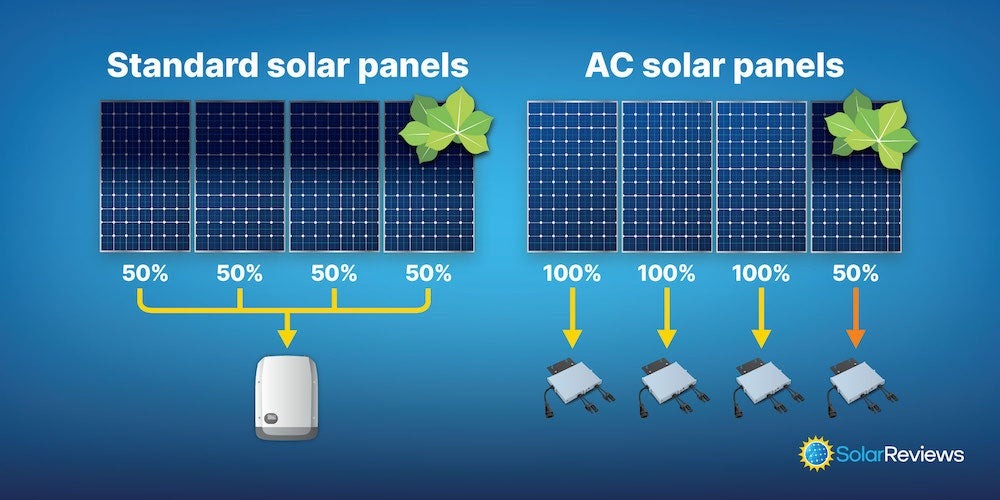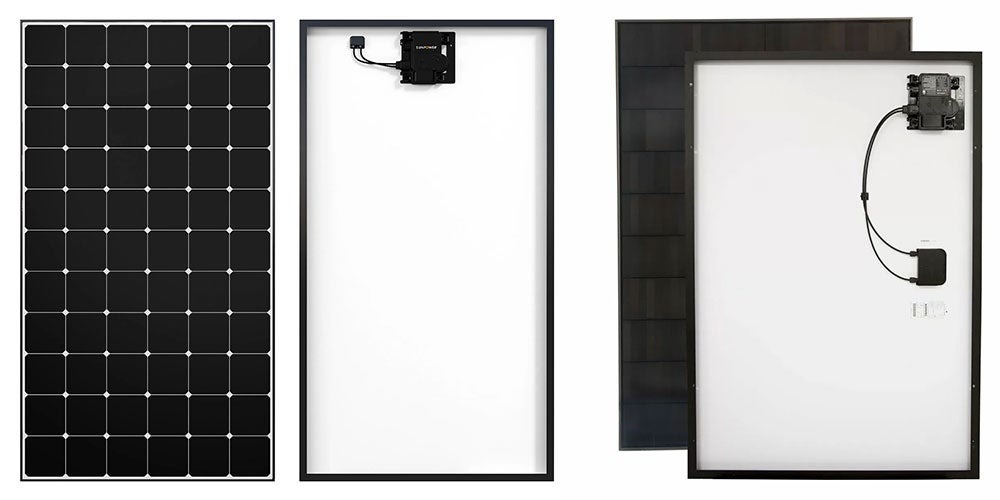Updated 11 months ago
Everything you need to know about AC solar panels
Written by Catherine Lane Catherine LaneCatherine has been researching and reporting on the solar industry for five years and is the Written Content Manager at SolarReviews. She leads a dyna...Learn more

Why you can trust SolarReviews
SolarReviews is the leading American website for solar panel reviews and solar panel installation companies. Our industry experts have a combined three decades of solar experience and maintain editorial independence for their reviews. No company can pay to alter the reviews or review scores shown on our site. Learn more about SolarReviews and how we make money.
Most people don’t realize how many components go into a solar panel system. (Hint - it’s not just solar panels!) In fact, one of the most important parts of a solar system is the inverter, which converts the electricity your solar panels produce into energy your home can use.
AC solar panels come with inverters, called microinverters, attached to them, so you don’t need to buy a conventional central inverter. However, AC solar panels can be more expensive than conventional panels.
In this article, we break down how AC solar panels work, their pros and cons, and popular brands of AC solar panels, to help you decide if they are right for your home.
Key takeaways
AC solar panels come with a microinverter built into the back of each module.
High-quality solar panel brands like Solaria, SunPower, and Qcells sell AC solar panels.
AC solar panels make solar installations easier, increase system energy production, and make more complex system designs possible.
The downside of AC solar panels is that they are more expensive and can make repairs and maintenance more difficult.
AC solar panels are best for homes that require complex solar installations on multiple faces of their roof.
What are AC solar panels?
AC solar panels are solar panels that come with a microinverter already attached to each panel.
Every solar energy system needs an inverter in order to function properly. Why? Because solar panels convert sunlight into direct current (DC) electricity, but almost all homes use alternating current, or AC electricity, to run appliances. The inverter takes the DC electricity and converts it into usable AC power.
Learn more: The difference between DC and AC power
Instead of the DC power traveling from the solar panels to one central inverter, microinverters on the back of each panel convert the solar power to AC electricity right at the panel, where it can then be sent directly to your home. Some homeowners opt for microinverters because they can increase the output of their solar system and make the installation process easier.
You can buy microinverters individually, or you can opt for AC solar panels, which already have them built in.
What brands of AC solar panels are available?
AC solar panels are becoming more popular among homeowners, with many major solar panel manufacturers offering AC module options, including Solaria, Qcells, SunPower, and LG.
Solaria PowerXT Pure Black

Image source: Enphase
Solaria is one of four solar panel manufacturers that has paired with Enphase, one of the most popular solar inverter manufacturers, to make AC modules.
Solaria’s Power XT Pure Black monocrystalline panels are popular for their sleek, all-black look. You can choose between two Solaria AC modules: the 355-watt panel or the 365-watt panel. Solaria no longer manufactures these panels, however, they may still be sold by installers who gave them in stock.
Both modules have an Enphase IQ7+ microinverter attached. The Enphase IQ7+ has a continuous power output of 290 watts and an efficiency of 97.5%.
Qcells Q.Peak DUO BLK-G6+/AC

Image source: Qcells
Qcells is another solar panel brand that is great for residential solar installations. Its AC module is available with two power ratings: 340 watts and 345 watts.
The Qcell AC modules use the same Enphase IQ7+ microinverter as Solaria.
SunPower Maxeon 5 AC

Image source: Enphase
SunPower is another manufacturer that has partnered with Enphase to create AC solar modules. SunPower is one of the top-selling home solar panel manufacturers and is best known for having the highest-efficiency panels on the market.
The Maxeon 5 AC has a power range between 400 and 415 watts, with efficiencies reaching up to 22.2%. Each module has an Enphase IQ7A microinverter attached, which is more powerful than the inverter used on the Solaria and Qcells AC panels - it is capable of 349 watts of continuous power.
However, the IQ7A has an efficiency rating of 97%, which is slightly lower than the IQ7+ inverter used by Solaria and QCELLS AC modules.
The pros and cons of AC solar panels
Like most things, AC solar panels come with their own set of advantages and disadvantages. The following table outlines some of the pros and cons of AC solar panels:
Pros | Cons |
|---|---|
Easy installation | Expensive |
Decreases shading issues | Maintenance and repair difficulty |
Ideal for complex installations | Exposure to elements |
Increased energy production |
|
Easy system expansion |
|
Factory fitted |
|
Advantages of AC solar panels
Easy installation
AC solar panels are called ‘Plug and Play’ for a reason. They’re extremely easy to install because they don’t require all of the same DC wiring that is needed to connect solar panels to a central inverter. This cuts down on the amount of time and materials needed to install these panels.
Simplifying solar panel wiring cuts down on the materials and time needed to complete a solar installation, which can end up lowering the overall labor costs.
Reduces impact of shading
When a solar power system uses a central inverter, the shading on one solar panel decreases the output of all of the other panels in the string. AC solar panels don’t have this problem. If there is one shaded panel, the rest will continue to operate as normal.

So, let’s say you have five solar panels in a string and one of them gets covered by some fallen leaves. The solar panel that is covered by leaves drops energy production to 50% because half of the panel is covered. With a central inverter, the remaining four panels will also operate at 50%.
With AC solar panels, only the covered solar panel will operate at 50%; the rest will be operating at 100% because they each have an individual inverter.
Better for complex installations
With a string inverter, all of the panels must be installed in the same orientation to properly connect to the inverter. So, if you need to put solar panels on two different sides of your roof, you’ll need two different inverters.
Microinverter systems, on the other hand, can be installed anywhere on your roof. There is no limitation on the orientation of the solar array.
Because each AC solar panel has its own inverter, each panel can be installed in any orientation without having an impact on the rest of the panels in the system. This makes AC solar panels great for more complex installations that may require solar panels to be put on multiple roof planes to produce enough power to cover the home's energy consumption.
Higher solar energy production
AC solar panels can potentially increase the amount of electricity your solar panels produce. One obvious way they do this is by reducing the impact of shading, which we talked about earlier. But that’s not the only way.
Because AC solar panels have microinverters attached to them, the inverter can maximize the amount of solar production from each panel through something called maximum power point tracking (MPPT). This can end up increasing your PV system’s power generation between 5 and 10%.
Easy future expansion
Most solar systems are paired with a central inverter that is sized for their system. This means that if you want to install more solar panels in the future, you will also have to get another inverter that can handle the additional panels.
Systems with AC solar panels won’t have this problem. There is no central inverter to get overloaded, so you can just connect more AC solar panels and call it a day.
Microinverter connected in factory
You can get all of the benefits we listed here from traditional solar panels that are paired with a microinverter. However, because the microinverters are attached to AC solar panels in a factory, there’s less room for errors in connecting the inverter to the panel.
Disadvantages of AC solar panels
Cost
AC solar panels cost more than conventional photovoltaic solar panels because they include the cost of an inverter. The overall cost of the equipment of an AC solar system will likely be higher than a string inverter system - microinverters are expensive.
However, AC solar panels are easier to install, so the overall installation costs may be lower because less labor is required.
Exposed to elements
The problem with having dozens of inverters on your roof is that those inverters are more exposed to the elements than a traditional system. Typically, you’ll find somewhere that is sheltered from the elements to house your inverters.
With the inverters built into the back of your modules, you have no choice in where they are installed. Microinverters are designed with this in mind, but they still are at greater risk of damage from the weather.
Difficult to access for repairs and maintenance
Perhaps the biggest downside to AC modules is that it can be difficult to service them if there’s a need for a repair.
With a traditional central inverter, a solar professional can come to your home and repair or replace your one inverter relatively quickly. With the AC modules, the faulty inverter will have to be identified, which can take a bit of time. If you have 20 panels, all of them will need to be checked to find the busted microinverter.
Not to mention, someone will need to get up on your roof to do this. That's extra time, and probably extra money for you, to fix an inverter.
Are AC solar panels right for you?
AC solar panels are best for homes that require a complex solar system design, so the AC panels can be installed anywhere, regardless of their orientation. AC solar panels are also a great choice if portions of your roof are covered by shade regularly. This way, when one panel is shaded, the rest of the system won’t be affected.
Most AC solar panels on the market are from high-quality, Tier 1 solar panel manufacturers, so the panels themselves will be reliable and perform well. However, inverters tend to be the first thing that breaks in a solar panel system, and having dozens of them on your roof could cause a headache even though most microinverters have 25-year warranties.
If you’re opting for an off-grid installation, you’re better off going with conventional PV panels, as many off-grid projects use batteries that charge with DC power.
The best way to find out what solar panels are right for your home is by getting quotes from local solar installers. Not only will this give you an idea of the type of system you need, but it can help you find the lowest price for a solar installation.
Catherine has been researching and reporting on the solar industry for five years and is the Written Content Manager at SolarReviews. She leads a dynamic team in producing informative and engaging content on residential solar to help homeowners make informed decisions about investing in solar panels. Catherine’s expertise has garnered attention from leading industry publications, with her work being featured in Solar Today Magazine and Solar ...
Learn more about Catherine Lane